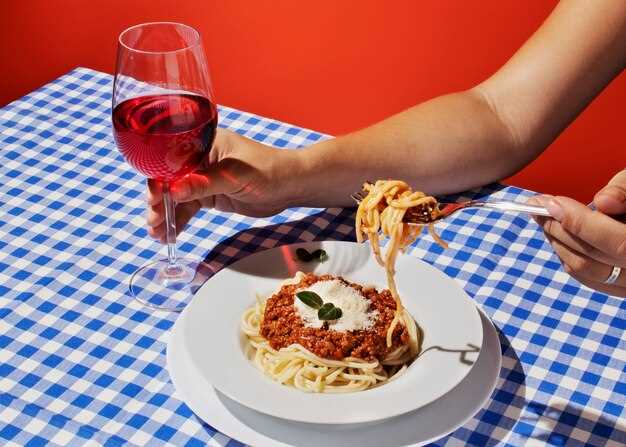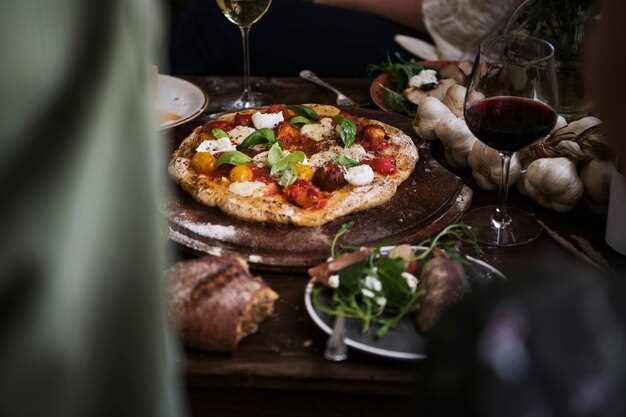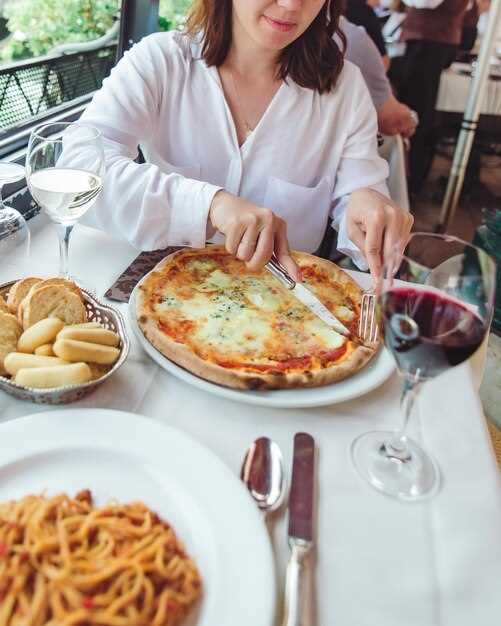
If you asked for the quickest route to taste and learn real Rome flavors, book the Rome Pizza & Gelato Cooking Class with Wine. If you’re looking for a practical start, this class is the answer. It delivers a true, hands-on session that blends dough, sauces, and gelato with a guided wine flight in one flavorful experience.
You learn by doing: knead dough, stretch a Roman pizza, and churn gelato. Our host Marzia (marzia) explains flour ratios, water temperature, and the feel of dough, then you practice until the texture sings. By the end, you will have learned tricks that help you balance moisture, crust, and topping harmony. The class highlights toppings in specialties and includes a concise wine primer so you learn what wines pair best with basil and mozzarella. All supplies, aprons, and tastings are included.
The session accommodates intolerance and dietary preferences. If you have restrictions, the instructor suggests substitutions to keep flavors vibrant. The wines come from Amerlina (amerlina), with red, white, and sparkling options, so you can choose what you prefer whether you like something light or bold. The atmosphere stays friendly, and you can chat with your peers while you cook.
What’s included: a 3-hour session in a cozy Rome studio, hands-on dough work, pizza shaping, gelato making, guided wine tastings, and a shared tasting of the day’s creations. You’ll leave with practical recipe tips, a compact card you can take away, and the confidence to recreate meals at home later.
Highlights include tremendous hands-on practice, true hospitality, and a point you can take to your kitchen: how to balance texture, heat, and aroma in a real Roman setting. If you’re deciding whether to book, this option offers a strong value for couples and small groups, with Marzia and the Amerlina wines adding a personal touch that makes the experience memorable.
Entering a Roman Kitchen: A Personal-Touch Pizza & Gelato Class in Rome
Book a small, hands-on workshop in downtown Rome to dive straight into the kitchen with the cooks and enjoy a personal touch from the start.
From the moment you step in, you quickly notice the balance between guidance and participation. The organizers designed the flow so every guest can roll dough, shape pizzas, and taste the sauce without feeling rushed. pepe greets you with a friendly smile and leads the dough station, keeping the energy lively for beginners and seasoned cooks alike.
You’ll learn techniques for a blistered crust, proper hydration, and sauce texture, then switch to gelato basics, including churning and incorporating seasonal fruits for color and brightness. The class balances savory and sweet in a way that makes each bite feel like a story, and the wine pairings, especially Tuscan varietals, enhance the tasting–and your sense of place.
This experience focuses on people, not poseurs: Most attendees stay for the conversation, the aromas, and the chance to ask questions. Many guests return for the recipe tips and the shared laughs. It suits families, friends, and coworkers, and is suited to groups including children and adults, so your group can move at a pace that works for them. Reviewers note the informal vibe while keeping quality high, and the cooks welcome any questions.
The activity unfolds with walking between stations, a few quick demonstrations, and then hands-on activity at each station. The local atmosphere, the friendly guys running the stations, and the sense of accomplishment at the end make it a memorable part of any Rome stay. This is not a big, formal tour but a focused, intimate session that leaves you with confidence in your own kitchen.
Plan ahead: book a meetup near your hotel or a central point, and check if organizers offer private slots for groups. Bring a notebook for questions and a smile for friends you bring along, because this class aims to leave you with something tangible: a pizza you baked, a gelato you churned, and a recipe card to take home as a reminder of this moment.
What’s Included in the Class: Hands-on Pizza, Gelato, and Wine Tasting

If youre after a hands-on, authentic Italian session, this class delivers: you cook tuscan-style pizza with a blistered crust, you churn gelato in small batches, and you taste wine with straight pours and expert guidance. Each step invites you to explore, while stories from the local culture unfold, creating a well-rounded experience you can really share.
Instruction is clear and practical: the instructor demonstrates dough handling, sauce and topping assembly, and gelato preparation, then you cook side by side, ask questions, and refine your technique. If you didnt try this, you might miss the technique. The focus stays on skills you can replicate at home, in these classes.
Dairy-free options are available, and we accommodate severe dietary needs; if you have allergies, we tailor substitutions. The experience is catered to groups, with each guest receiving a wine pairing and a concise explanation of flavors. Only fresh ingredients are used, and you can note any allergies or preferences when booked.
Booked guests report strong reviews, which highlights warmth and practicality. Pepe adds a playful pepper note to the sauces, complementing the tuscan focus. You can ask questions, thank the hosts, and leave with a well-rounded sense of culture and cooking.
How to Master Roman-Style Pizza Dough: Fermentation, Hydration, and Shaping
Aim for 65% hydration and 20–24 hours of cold fermentation to achieve a crisp crust with a tender crumb. This combination blends practicality with depth of flavor, producing a dough that tastes better than quick mixes and is really memorable for friends and family.
To advance your technique, keep these choices in mind:
- Flour: 00 or high-protein bread flour; for a nazionale-inspired texture, blend 60–70% 00 with 30–40% bread flour.
- Hydration: aim approximately 65% (approximately 65 g water per 100 g flour); for wetter doughs you may go up to 66–67%, but handle with care during shaping.
- Fermentation: after mixing, rest 15–20 minutes (autolyse), then bulk ferment 18–24 hours in a cool place; this is the источник of aroma and depth. If your fridge runs warm, keep the dough close to 4°C to slow the rise and extend the window times.
- Salt and yeast: use 2% salt and a small amount of instant yeast for a faster rise; skip yeast for longer, slower development.
- Water temperature: use cool water to avoid premature fermentation; during cold fermentation this helps you advance flavor.
Process during handling:
- When mixing, bring together until a shaggy mass forms, then rest; this gives you time for gluten development without heavy kneading.
- Fold the dough during the bulk stage every 4–6 hours; these folds strengthen structure without tearing the dough.
- Divide into balls after the main fermentation; let them rest under a damp cloth for 1–2 hours to relax.
Shaping technique to achieve a true Roman crust:
- Dust your surface lightly, then gently press a dough ball into a disk; use fingertips to stretch from center outward, leaving a thicker edge for cornicione.
- Rotate the disk as you stretch, using gravity to widen the center while preserving a puffy rim; avoid rolling pins that flatten the dough.
- Keep the dough on a well-floured peel or tray and bake on a preheated stone or steel at high heat; at home aim for 250–290°C (480–550°F) for a good bake.
- Let each pizza rest briefly before loading toppings; this helps the dough keep its shape during transfer and bake.
Note about setting and atmosphere:
- For a piazza-like vibe, prep dough in a bright kitchen and invite friends to watch and help; the energy makes the process more memorable.
- Store the dough in the fridge away from strong smells; источник aroma comes from slow fermentation.
- Questions that often arise include dough hydration, resting times, and oven behavior; above all, keep notes and adjust as needed.
Questions and quick answers:
- Q: How long to ferment? A: 18–24 hours in the fridge, then a short warm rest before shaping.
- Q: What thickness yields the traditional Roman crust? A: Edges around 1.5–2 cm are ideal.
- Q: Can I use a sourdough starter? A: Yes, but hydration and timing shift; plan for longer fermentation and lower yeast levels.
In practice, this method blends technique with patience. The dough becomes resilient, easy to handle, and forgiving enough for a lively class where you and your friends cook together in a warm, approachable way here. The result is a really memorable pie, reminiscent of a nazionale-inspired style, with a crisp edge and a soft center. Enjoy the process and love the crust you produce, then share the recipe with your family and neighbors above all.
What Gelato Techniques Will You Learn and How Many Flavors Can You Create?
For those wanting to start cooking, this English-led class gives a genuine, good foundation and ready techniques.
You’ll learn base preparation, emulsification, freezing, and overrun control, with a focus on balancing sweetness and creaminess. An English-speaking team guides you through safe temperatures and hands-on practice, while you feel the warm welcome of a welcoming, professional setting that emphasizes authenticity and genuine craftsmanship.
Recipes draw from источник of Italian tradition, with italys regional flavors such as pistachio, hazelnut, vanilla, cacao, and citrus, plus seasonal fruits. This class offers something for tourism lovers and home cooks looking to add something special to meals.
Looking at ingredients with a critical eye, you’ll learn to select fresh components that elevate every flavor. The concept blends this approach with a hands-on rhythm, and the session runs through this afternoon format, with time to refine each step and later compare notes while walking a tasting line. Highlights include texture tuning, aroma balance, and appealing presentation, all in a warm and welcoming environment that invites conversation.
What you can expect in terms of flavor counts? In practice, you can create 6–9 flavors, mixing four core bases with 2–3 custom infusions and fruit notes, so you finish with a solid lineup you can offer during meals or small events. You’ll leave ready to reproduce them for friends, family, or guests who visit for a casual tasting or walking tour.
| Technique | Flavor Potential | Notes |
|---|---|---|
| Base preparation, pasteurization, and emulsification | 4–6 flavors | Foundation for dairy gelato; vanilla, hazelnut, pistachio, coffee blends |
| Flavor infusion and layering | 2–3 flavors | Herbs, spices, citrus; careful balance to avoid overpower |
| Fruit purée and seasonal additions | 3–4 flavors | Fresh fruits; bright notes; quick turnover |
| Chocolate, coffee, and nut components | 2–3 flavors | Roasted notes; smooth textures |
| Texture tuning and overrun control | 1–2 textures per batch | Adjust churn pace, air incorporation for creaminess |
With this experience you gain the skills to impress lovers of good cooking and offering genuine desserts. The process keeps authenticity alive and hands you a ready method you can carry into later sessions, at times that fit your schedule, while walking through your own kitchen or a small event lineup.
Which Wines Pair Best with Pizza and Gelato, and How Should You Taste Them?
Pair a dry Vermentino with Margherita and a medium-bodied Chianti Classico with pepperoni; finish with Moscato d’Asti or Vin Santo for gelato, especially tiramisu. Look for wines that refresh between bites and balance the tomato sauce’s acidity. Before you sip, tilt the glass to observe color and swirl to release aromas; what matters is balance, not bravado, and looking for a light to medium body makes the choice easy. whats more, italians in mille towns know this trick, and a short walking tour on a warm evening often proves it in practice.
What to taste and how: look at color, then inhale to catch fruit, herb, and oak notes. What to notice: acidity, sweetness, and tannin balance; attention to the finish reveals structure. Before sipping, rinse with water; keep wines at the right temperature for easy comparison–white wines slightly cooler, reds closer to room. Looking for a wine that cuts the sauce and cleans the palate makes the pairing intuitive. For gelato, choose slightly sweeter or fruity wines to contrast creaminess; tiramisu benefits from a wine with a gentle bitter edge; skills improve with practice, as any masterchef would tell you; chef and home cooks know the same trick.
Tips to guide your choices: with plain Margherita, start with a crisp white like Gavi or Vermentino; with robust tomato sauces, reach for a red such as Sangiovese or Chianti; with white sauce pizzas, try Soave or Falanghina. For gelato flavors, Moscato d’Asti or Vin Santo pairs beautifully, and tiramisu can ride the sweetness when balanced by acidity. Distance between courses matters: keep a short pause between bites and sips to keep flavors defined. In family settings, keep portions small for children, and let everyone participate in the look and smell of each pour–this is beautiful, very inclusive tourism that cooks and hosts treasure. Masterchef-level practice builds these skills, blending knowledge known to italians with a simple routine you can repeat in any town. what works in one town may differ in another, so keep tasting and adjust.
Seasonal variations offer clear cues: light whites in spring, brighter reds in autumn, sparkling options in festivals, and dessert wines for lingering endings. The approach is easy: look for balance, respect the sauce, and let the wine carry the memory of the meal. Walking through warm nights and long conversations, you literally taste how culture, family, and skill come together in a single glass.
How Does the Host Create a Personal Connection in the Kitchen?

Greet each guest by name the moment they step in and pair them with a simple, hands-on task. This direct approach creates a personal connection, sets a relaxed vibe, and gives guests something tangible to do from the start. Have a quick intake checklist: name, dietary notes including vegan preferences, and preferred pace. A warm, straight approach translates into a roman rhythm where every person feels seen and able to contribute.
Offer 2-3 concise stories about ingredients and culture to spark quite a bit of curiosity. Describe how a tomato travels from a regional field to the cart, or how a dough fermentation timeline mirrors the day in the kitchen. Keep the pace light and factual; this personal layer helps guests around the table feel connected to the process. A quick anecdote from the host’s kitchen lightens nerves and makes making more approachable.
Assign clear, practical tasks that suit different energy levels. Use pick-ups: “grab a bowl”, “stretch the dough”, “brush oil”. This gives each guest a sense of ownership and avoids standing on the sidelines. This literally changes how guests engage with the process. Keep directions simple and complete; demonstrate once, then step back to let guests try. This approach highlights the host’s specialties and keeps the kitchen moving toward the final dish.
Monitor the vibe and adjust the pace. Some guests chat while they work; others prefer a straightforward focus. Match your tone to the moment: a bit of humor, direct tips, and practical guidance. The result is a kitchen flow where every guest feels seen and valued. This setup ends with a warm round of tasting.
Highlight vegan options and the host’s specialties. Offer vegan dough with olive oil and plant-based cheese, or a gluten-free option for comparison. Your professional approach shows that you respect dietary choices and still deliver a complete experience. When a recipe is released, invite guests to compare flavors and textures, not just follow steps.
Invite guests to spend time with the host after class to visit local markets or the kitchen garden. This ties back to culture and invites authentic connection. Mention how the roman heritage informs the menu and turns a class into a memorable visit. This approach is recommended by many hosts who value connection. By the end, guests leave with stories, a sense of belonging, and a plan to recreate a piece of Rome at home.
